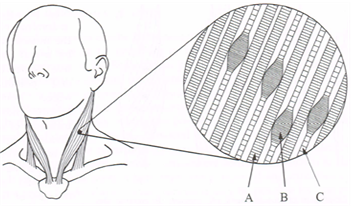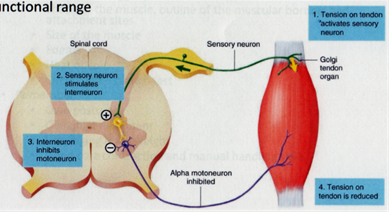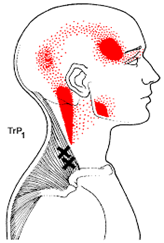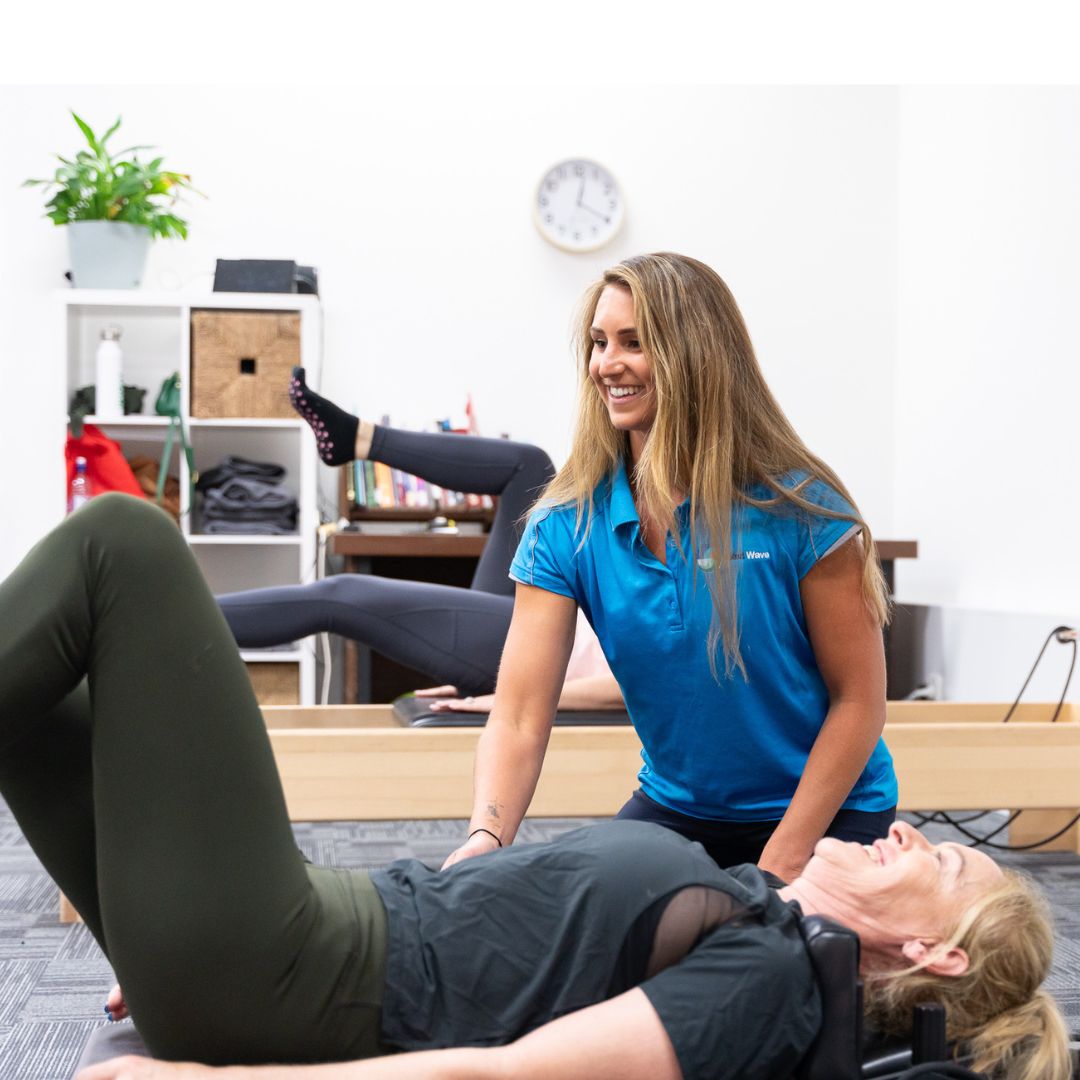Soft Tissue Occupational Therapy O’Connor (Fremantle area) WA
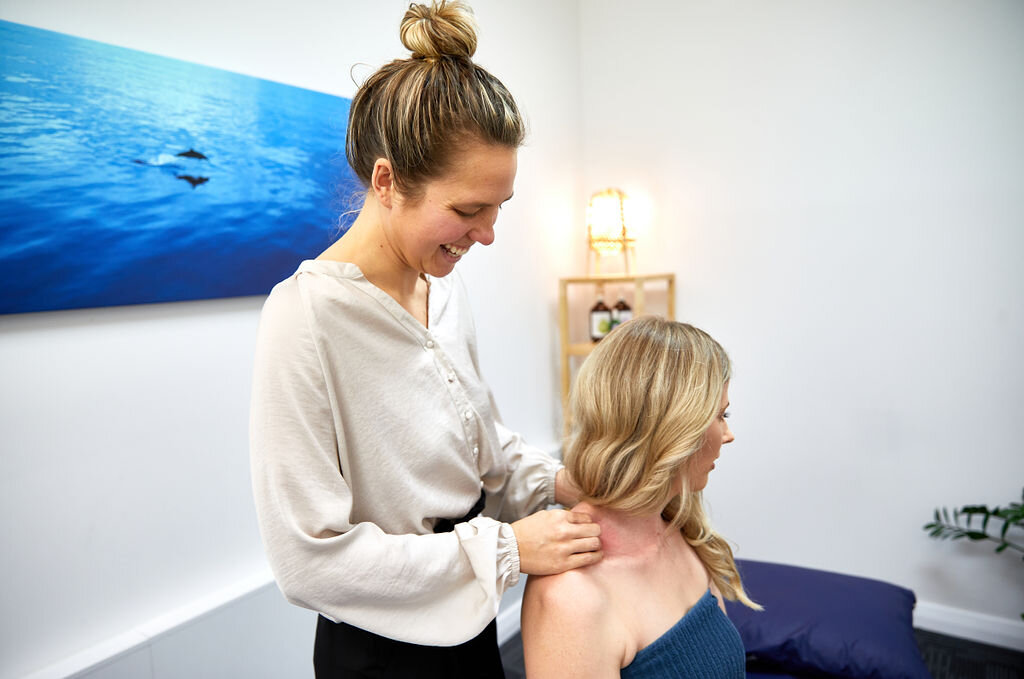
Occupational Therapist OT applying myofascial therapy
Treating Muscle Pain with Soft Tissue Therapy
Soft tissue therapy is an occupational therapy approach for treating muscle pain and stiffness. Soft tissue therapy is a broad heading that covers several treatment techniques such as myo (~muscle) fascial (-fascia) trigger point release, dry needling, soft tissue massage and acupressure.
As an occupational therapy approach it also includes an assessment of underlying contributing biological and psycho-social factors to muscle injury PLUS the resultant or causative occupational disruption.
What actually is a tight muscle?
Everyone has had a stiff neck, sore back, achy legs at some point in their lives. This sore muscle ache or tightness is known as myofascial pain and is caused by muscular irritation, which radiates from sensitive spots in the muscles, called myofascial trigger points or ‘knots’.
Trigger points
Myofascial trigger points are a hyperirritable (contracted) spot, usually within a stiff band of skeletal muscle, which is painful when pressure is applied and may result in referred pain, tenderness, tightness, reduced range of motion and motor dysfunction.
Trigger Points
In this diagram, ‘A’ depicts a healthy, loose muscle fibre with equally distributed segments.
Point ‘B’ portrays a ‘knot’ in the muscle fibre.
Point ‘C’ shows the shortening of the muscle fibre due to the creation of a ‘knot’.
Trigger points produce pain and stiffness
As you can see the ‘knot’ on trigger point B in the above diagram, bulges out and eliminates the space between it and the neighbouring bands of muscle. By eliminating this space between bands, waste removal and blood flow is reduced, leading to pain, inflammation and muscle degeneration.
This compares with point C where in shortened muscle fibre, each segment is tight and at full stretch leading to stiffness and reduced range of motion.
Pain and inflammation resulting from tight, stiff and tender muscles can be relieved by releasing the ‘knots’ to increase the space between the bands and flushing out the waste products by increasing blood flow and changing nerve conduction thus, allowing injuries to heal.
What does soft tissue therapy involve?
Musculoskeletal pain can be treated via soft tissue therapy, myofascial trigger point release, acupressure, stretching exercises and dry needling. Next Wave Therapy utilises these treatment methods to relieve soft tissue stiffness, tenderness, and pain enabling clients increased independence and returned ability to perform their activities of daily living.
Myofascial treatment works to pinpoint the location of the myofascial trigger points and apply pressure to shorten an already shortened muscle fibre. This increased tension alerts the sensory neuron within the fibre and sends a message to the brain via the spinal cord. A message is then relayed to the associated motor neuron to tell the muscle it is safe to relax. .
Common conditions treated with myo-fascial soft tissue therapy
Next Wave utilise myofascial and soft tissue therapies to help manage common conditions such as back pain, headaches, chronic fatigue, fibromyalgia, stress related muscle tightness, and sports related injuries.
Trigger points refer pain
This diagram demonstrates how myofascial trigger points can refer pain which feels like a headache.
The trapezius muscle, shown in grey can become tight for many reasons, with the most common factors being stress, poor sleep and holding a particular posture for too long (hello office workers).
The myofascial trigger points are shown as two black crosses on the border of the muscle.
This is where the therapist will apply pressure to increase blood flow and muscle tension.
When the therapist applies pressure to the crosses on the diagram, pain will refer, as shown by the red colourings.
The deep red is where the majority of pain caused by trapezius tightness is mostly felt.
The reference of pain felt by the client as the therapist applies pressure should feel like the pain the client experienced and reported prior to the soft tissue session.
Psychosocial factors contribute to pain
In addition to musculoskeletal causes, psychosocial factors have been shown to increase muscle tightness and pain, contributing to chronic myofascial pain as seen in patients with fibromyalgia syndrome. Therefore, treating a person with a holistic approach is core to Occupational Therapy. Finding out information about all aspects of a persons life including personal stressors enables true recovery and long lasting effects.
The Role of Occupational Therapy in Soft Tissue Therapy
Occupational therapists at Next Wave Therapy utilise myofascial therapy through soft tissue therapy, myofascial trigger point release, dry needling and acupressure techniques. Relieving pain, inflammation, stiffness in muscles and increasing range of motion while allowing injuries to heal. This allows clients to return to participating in their valued and meaningful occupations whatever that may be for someone.
Occupations define who we are, so when injury and pain impede on our ability to effectively participate in tasks that give us purpose, our satisfaction and quality of life is negatively impacted. Therefore, Occupational therapists work with you to return to pain free living and participation in occupations to increase quality of life.
Occupational Therapists focus on the whole person and all areas of one’s life. Alongside treating the myofascial pain the occupational therapists at Next Wave Therapy look into all aspects of one’s life and also make other adjustments to reduce the occurrence of the myofascial pain. These adaptations can vary from workplace set-up, sleeping patterns, mindfulness, or stress management.
Written by Jess McMann Occupational Therapy student (Curtin University). Edited by Sasha Wray (Occupational Therapist at Next Wave Therapy)
REFERENCES
Abbaszadeh-Amirdehi, M., Ansari, N. N., Naghdi, S., Olyaei, G., & Nourbakhsh, M. R. (2017). Therapeutic effects of dry needling in patients with upper trapezius myofascial trigger points. Acupuncture in Medicine. 35(2), 85-92. https://doi.org/10.1136/acupmed-2016-011082
Aredo, J. V., Heyrana, K. J., Karp, B. I., Shah, J. P., & Stratton, P. (2017). Relating chronic pelvic pain and endometriosis to signs of sensitization and myofascial pain and dysfunction. Seminars in Reproductive Medicine. 35(1), 88-97. https://doi.org/10.1055/s-0036-1597123
Borg-Stein, J., & Simons, D. G. (2002). Myofascial pain. Archives of Physical Medicine and Rehabilitation. 83(1), 40-47. https://doi.org/10.1053/apmr.2002.32155
Esenyel, M., Calgar, N., & Aldemir, T. (2000). Treatment of myofascial pain. American Journal of Physical Medicine & Rehabilitation. 79(1), 48-52.
Guzmán-Pavón, M. J., Cavero-Redondo, I., Martínez-Vizcaíno, V., Fernández-Rodríguez, R., Reina-Gutierrez, S., & Álvarez-Bueno, C. (2020). Effect of physical exercise programs on myofascial trigger points–related dysfunctions: A systematic review and meta-analysis. Pain Medicine. 21(11), 2986-2996. https://doi.org/10.1093/pm/pnaa253
Kalichman, L., & David, C. B. (2017). Effect of self-myofascial release on myofascial pain, muscle flexibility, and strength: A narrative review. Journal of Bodywork and Movement Therapies. 21(2), 446-451. https://doi.org/10.1016/j.jbmt.2016.11.006
Lavelle, E. D., Lavelle, W., & Smith, H. S. (2007). Myofascial trigger points. Anesthesiology Clinics. 25(4), 841-851. https://doi.org/10.1016/j.anclin.2007.07.003
Lin, L., Qiang-Min, H., Qing-Guang, L., Nguyen, T., Li-Hui, L., Yan-Tao, Ma., & Jia-Min, Z. (2017). Management of myofascial trigger points associated with lower back pain: a systematic review and meta-analysis. Archives of Physical Medicine and Rehabilitation. 99(1), 144-152. https://doi.org/10.1016/j.apmr.2017.06.008
Moraska, A. F., Schmiege, S. J., Mann, J. D., Burtyn, N., & Krutsch, J. P. (2018). Responsiveness f myofascial trigger points to single multiple trigger point release massages – randomized, placebo controlled trial. American Journal of Physical Medicine & Rehabilitation. 96(9), 639-645. https://doi.org/10.1097/PHM.0000000000000728
Rathbone, A. T. L., Grosman-Rimon, L., & Kumbhare, D. A. (2017). Interrater agreement of manual palpation for identification of myofascial trigger points. The Clinical Journal of Pain. 33(8), 715-729. https://doi.org/10.1097/AJP.0000000000000459
Weller, J. L., Comeau, D., & Otis, J. (2018). Myofascial pain. Seminars in Neurology. 38(6), 640-643. https://doi.org/10.1055/s-0038-1673674

